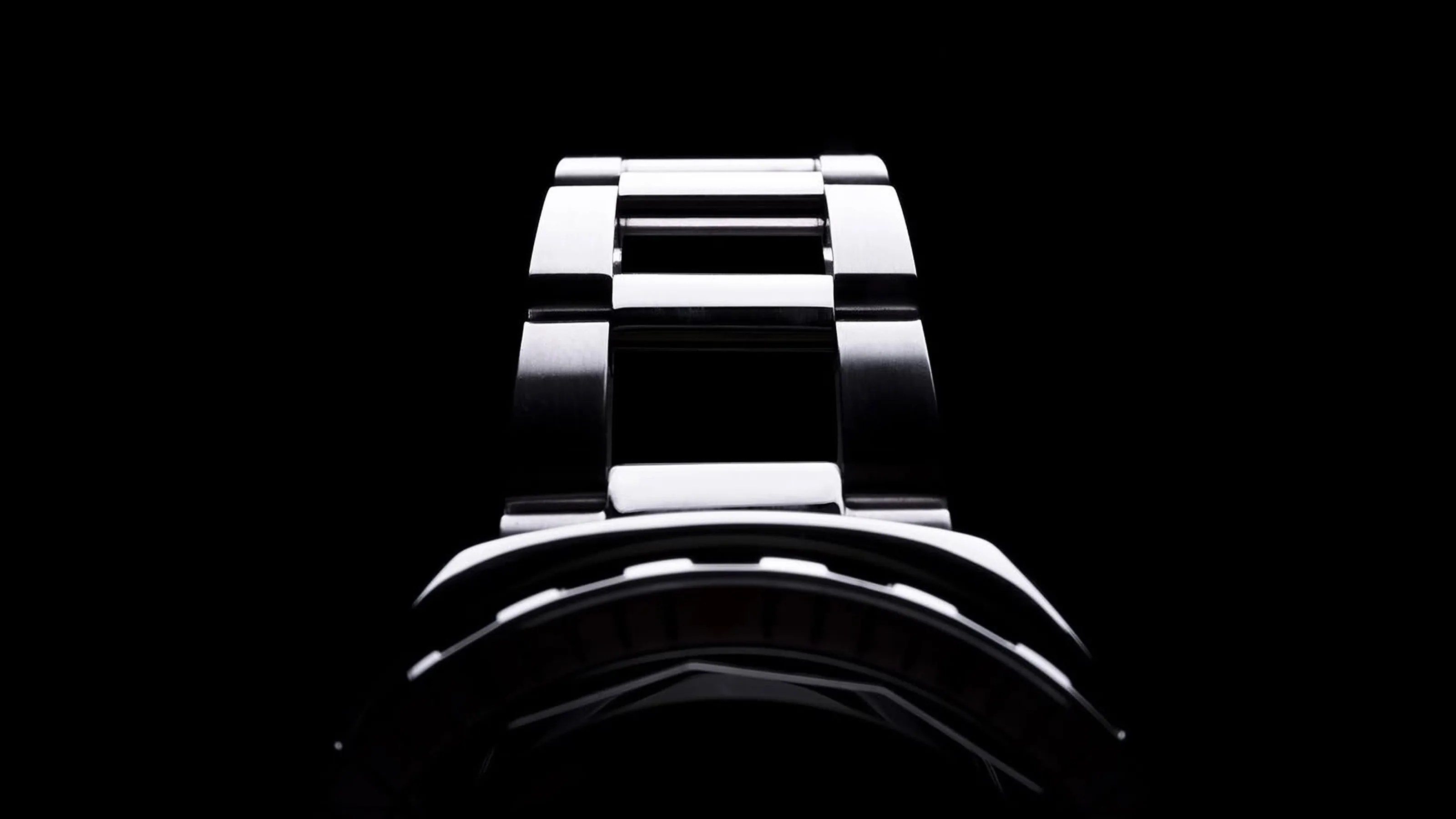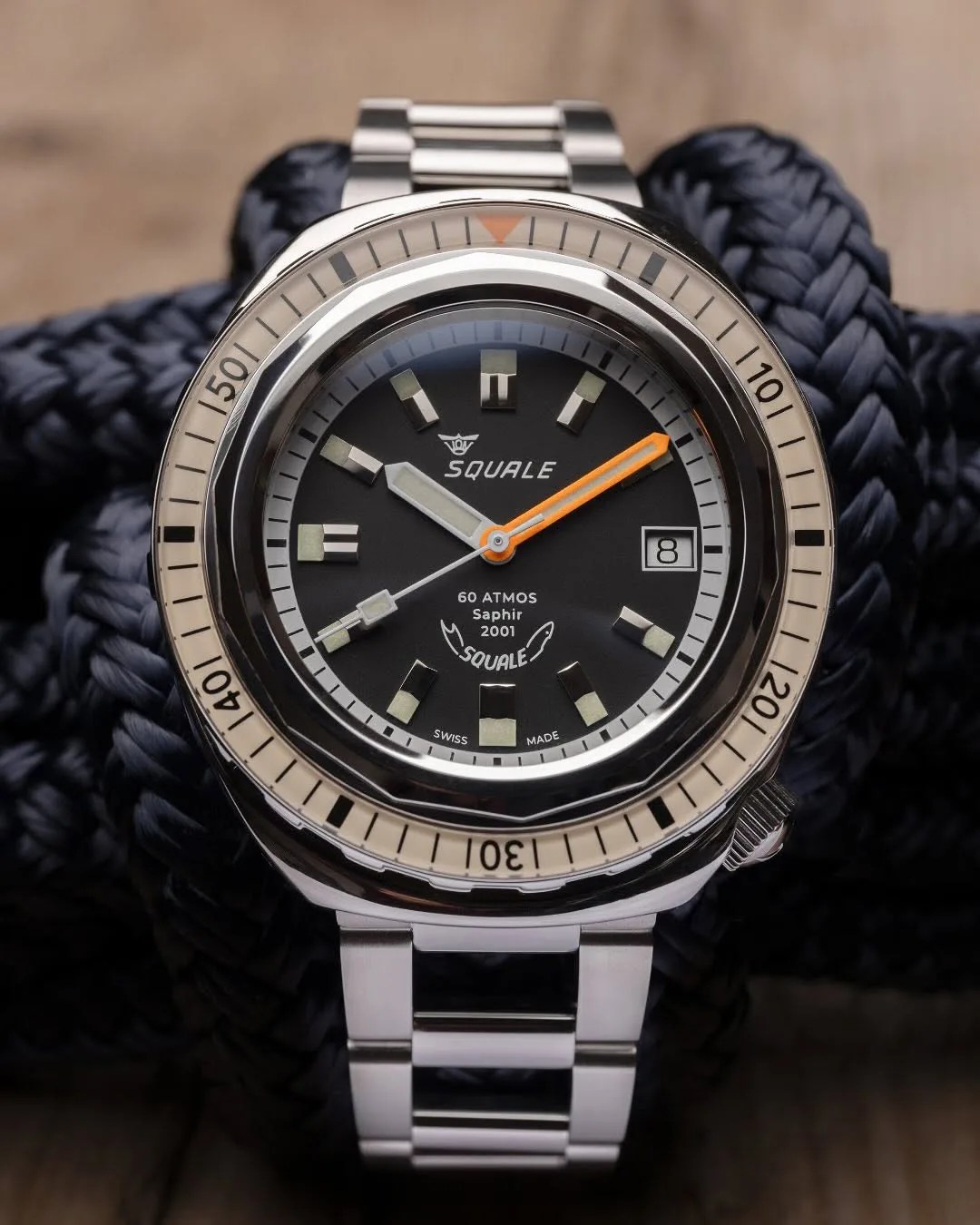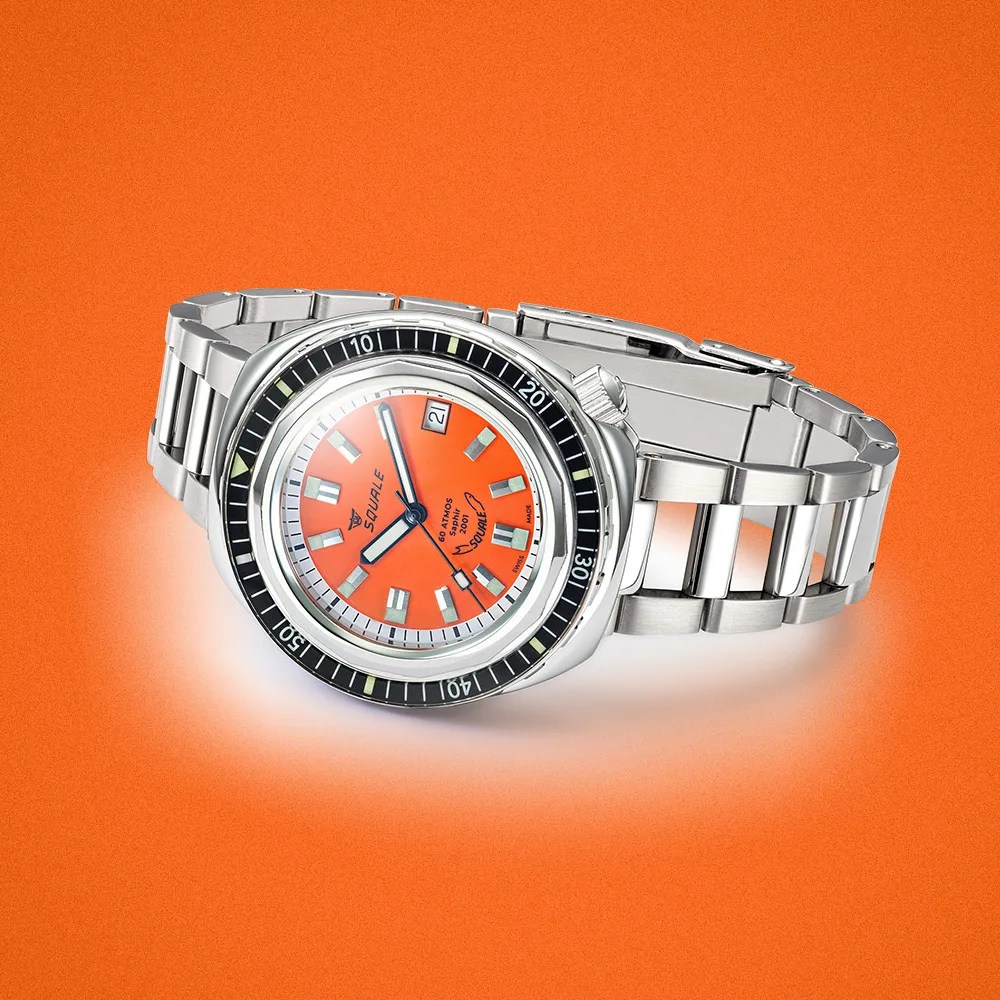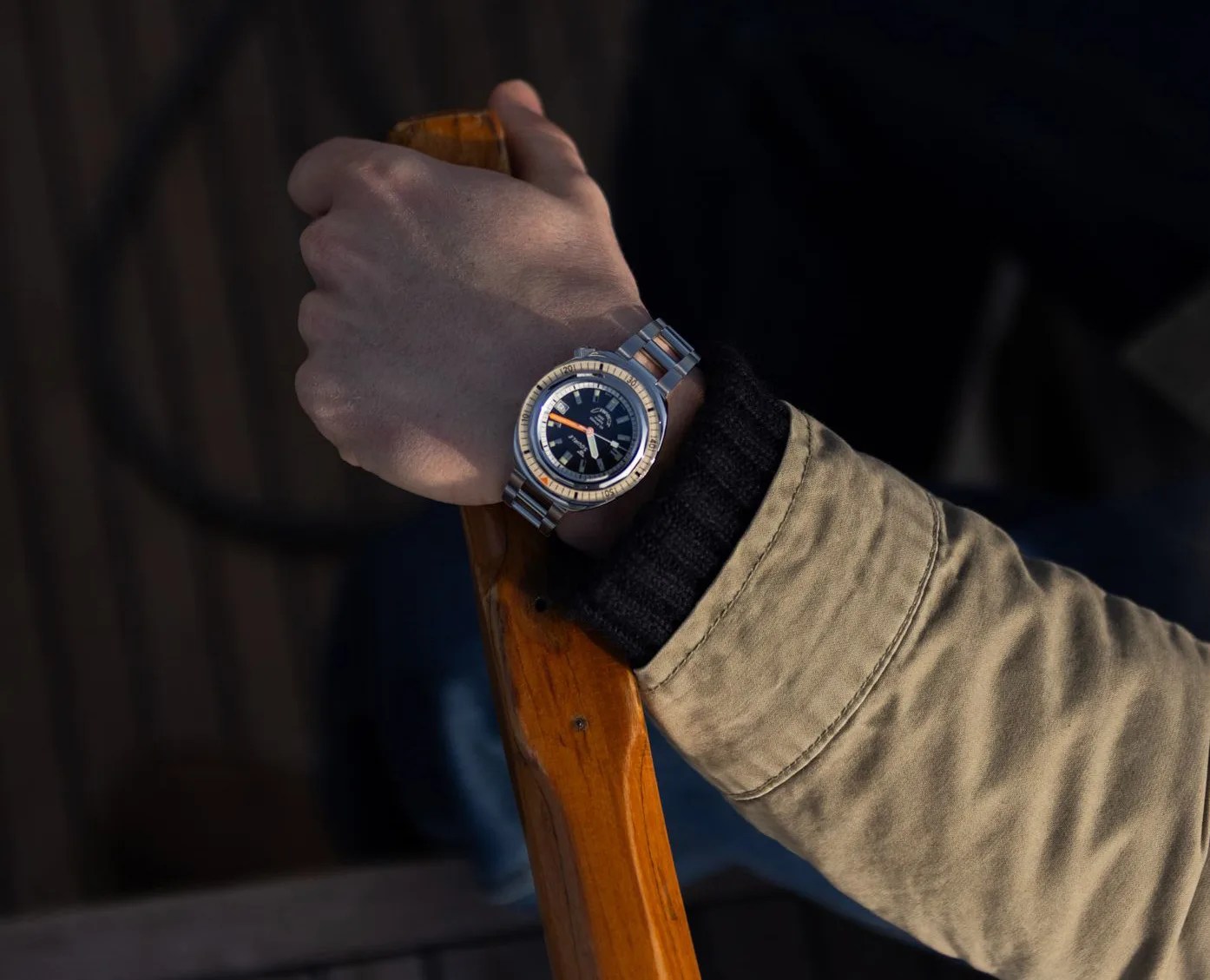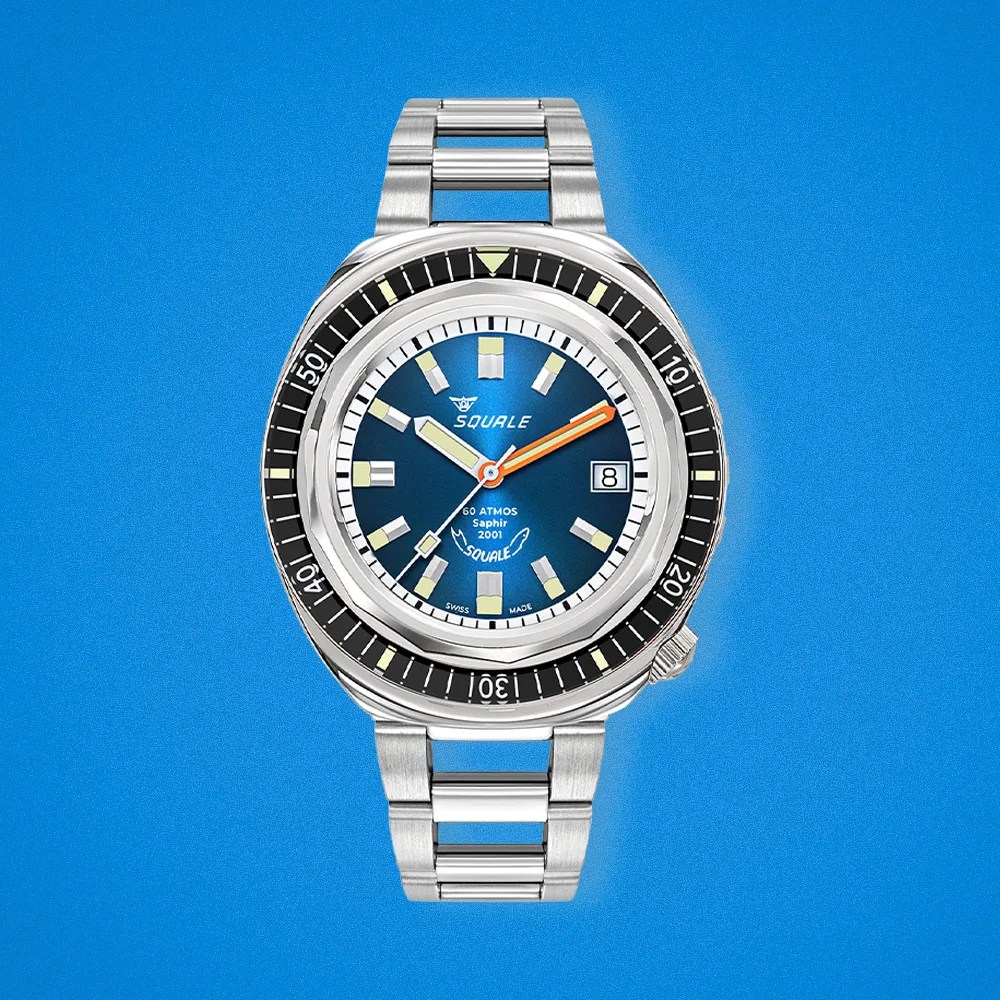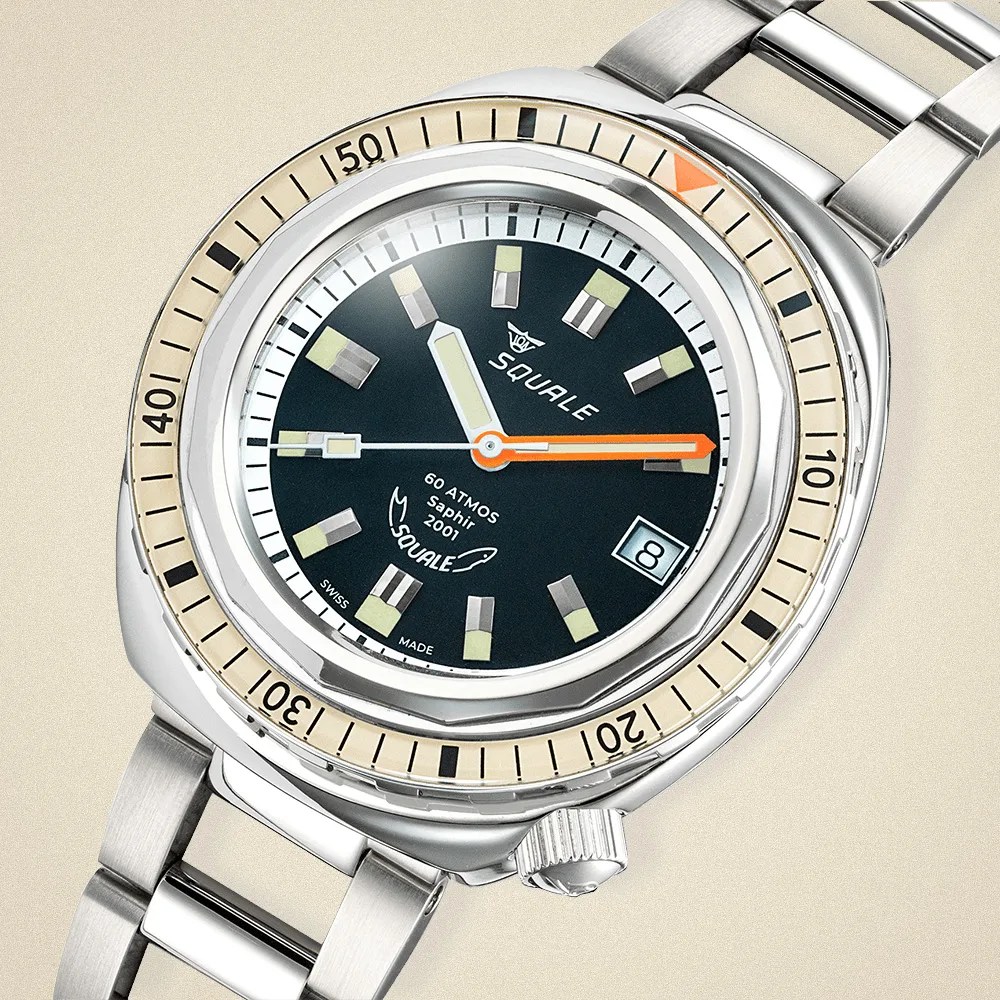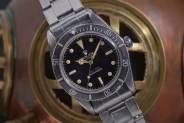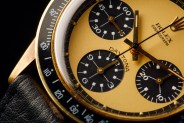Squale is an oddity in the broader world of watches. In an industry obsessed with stories of heritage, ties to the military, and famed men of action, the now nearly 70-year-old brand should be widely known even among casual watch fans.
Just consider these backstory breadcrumbs: Squale’s founder once supplied watch cases to other iconic dive watchmakers, including Sinn, Doxa, and Blancpain. The brand also supplied timepieces to Italian naval and air force units. It even counted aquatic exploration and free-diving titans like Steve Zissou Jacques Cousteau, and Jacques Mayol as fans.
And yet, today, as Monochrome’s Brice Goulard succinctly phrased it, “Squale is [still] often regarded as sort of a hidden gem of the dive watch scene.”
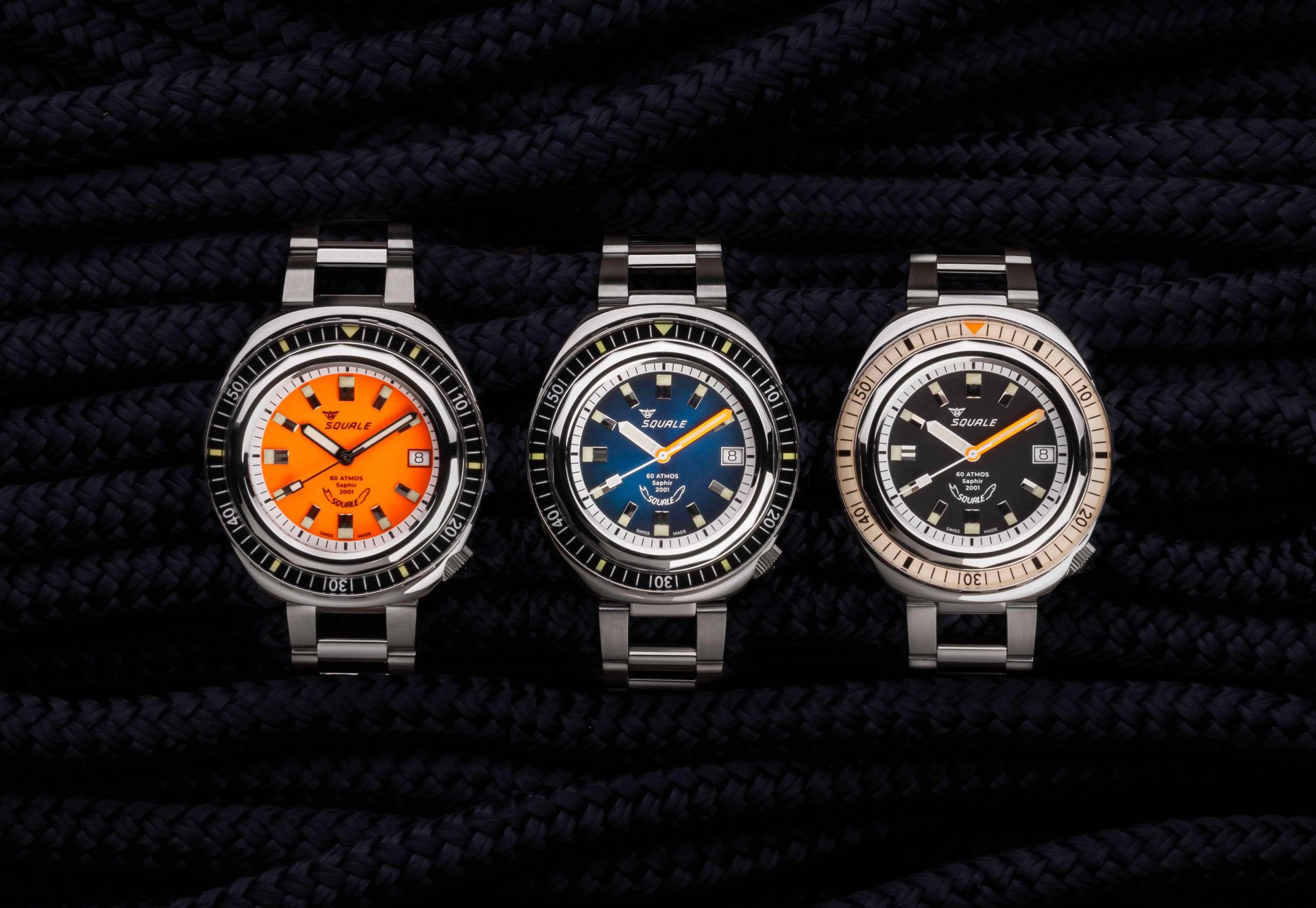
The official return of the brand’s 2001 dive watch, though, could win Squale wider recognition, especially among a new generation of watch enthusiasts otherwise bored with the sports watch market’s iterative state these days.
An Overlooked Diving Trailblazer
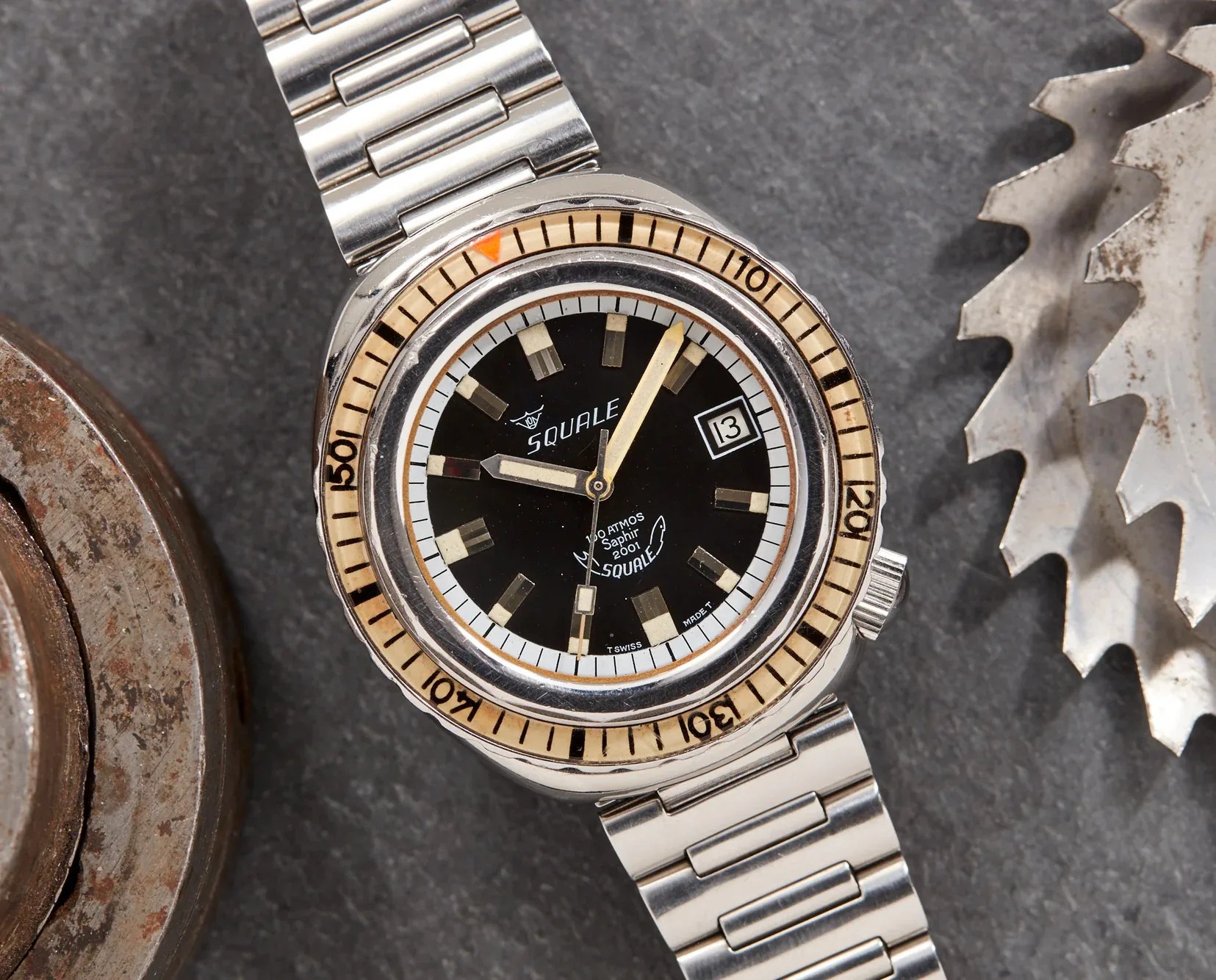
The original Squale 2001 was released in the late 1960s and initially designed in the brand’s own words “to accompany great freedivers in their dives into the ‘Grand Bleu.'”
It has two key horological claims to fame. The dive watch was one of the earliest to include a mechanism for locking the bezel after being set, preventing accidental knocks to the bezel from inadvertently screwing up dive times.

The Squale 2001 was also the watch Cousteau gifted to the first officer of his research vessel, Michel Laval, during their 1972 Antarctic expedition that eventually became the subject of the nature documentary Voyage to the Edge of the World.
